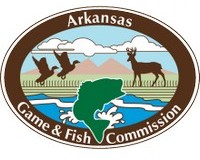
LITTLE ROCK The Arkansas Game and Fish Commission would like to remind people in Boone, Carroll, Johnson, Logan, Madison, Marion, Newton, Pope, Searcy and Yell counties that feeding wildlife outside of the Sept. 1-Dec. 31 baiting season is no longer allowed. Hunters also are reminded that a statewide ban on the use of scents and lures using natural deer urine also began Jan. 1, 2017. Both regulations were passed in June 2016, in response to the discovery of chronic wasting disease in Arkansas.
Cory Gray, research biologist with the Arkansas Game and Fish Commission, says there are exceptions to the restriction on feeding wildlife.
People can still have bird feeders, and feed wildlife by hand like the ducks at the park, Gray said. And any feeding of wildlife thats the incidental result of a normal agricultural operation is allowed. Food plots are even OK. Were just looking at feeders and baiting sites.
Many regulations concerning CWD were put in place to prevent the spread of the disease across the state, but feeding restrictions target a different, equally important goal.
We want to slow the spread of the disease over the landscape, Gray said. But we also want to slow its spread within the population where we know it is established.
Feeding unnaturally concentrates deer into very small areas, where nose-to-nose contact is increased, and the infectious agent of the disease, prions, become concentrated. Repeated use of the same baiting sites also can create a hot zone where these prions can exist indefinitely, infecting deer long after the initial carrier is gone.
Initially, AGFC biologists wanted to limit baiting and feeding on a statewide level, but supplemental feeding and baiting have become such a part of Arkansas deer hunting that many hunters felt a statewide restriction is unnecessary.
We wanted to be proactive in our management for the disease and reduce its spread in areas where it could possibly exist without our knowledge, Gray said. But we also wanted to work with hunters and have their help in slowing this disease. By limiting feeding in the areas where we know CWD occurs, we are meeting our goal and still allowing hunters the use of supplemental feed where it has not been detected yet.
Baiting is allowed in all other counties of the state, and its even allowed from Sept. 1 through Dec. 31 in the CWD Management Zone. During the majority of deer season, baiting is used to bring animals in for harvest, so it helps decrease deer density, another goal in fighting the spread of the disease.
Many landowners and deer clubs offer feed on a near year-round basis. Most believe they are helping deer and other wildlife with added nutrition. Some hunters even say they want to give deer these added nutrients to fight off CWD or prevent infection. Jennifer Ballard, the AGFCs veterinarian says those efforts are in vain.
The premise is understandable, because with many diseases caused by viruses, bacteria, fungal infections or parasites, the healthier an animal is the better immune response it will have and the better it can fight off the disease, Ballard said. But with prions, the infectious agent in CWD, animals really dont mount an immune response, no matter how healthy they are. Its a different kind of disease.
Ballard explains that feeding deer that have CWD may only prolong the amount of time the animal is spreading the disease.
If an animal has CWD, its not going to develop the disease and then recover from it, Ballard said. Its either going to develop the disease and die or it wont develop the disease. Its nutritional condition wont make it resistant.
The statewide ban on using scents that contain natural urine or other biofluids also went into effect with the new year. This ban, however, is not a seasonal regulation, but a permanent change.
We know prions from CWD are present in the urine, feces and saliva of infected deer, Gray said. And we know that many commercial facilities where these biofluids are created are in CWD-positive states. The method that many use collects these fluids from many deer at once into a central collection point where it is run through a screen to remove particles and bottled. What we cant be sure of is whether any of those animals in the facility have CWD.
Other states and Canadian provinces already have begun banning these scents using the same logic, and Gray believes many more will follow suit in the near future.
Many scent manufacturers have already begun offering synthetic deer urine and lures as a substitute, Gray said. Synthetic deer lures are still legal to use, and I encourage hunters to use them if they wish to go that route.
Visit www.agfc.com/cwd for more information on CWD in The Natural State.
WebReadyTM Powered by WireReady® NSI










